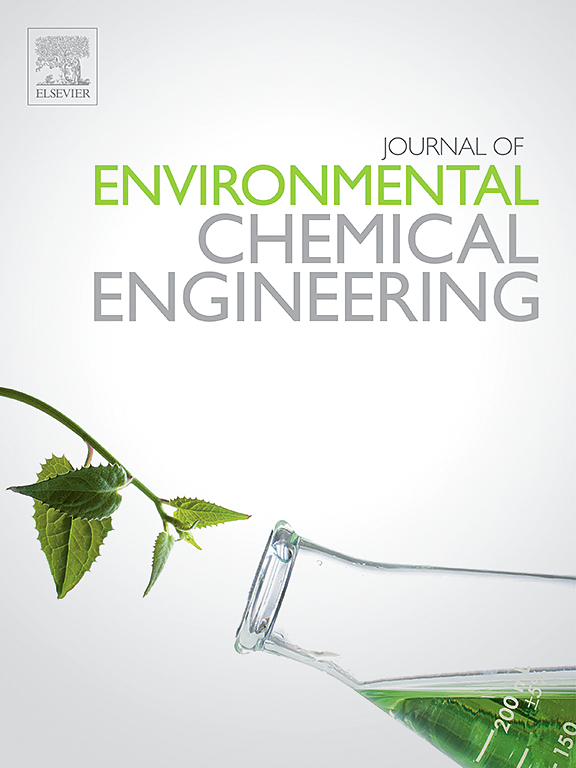BiOCl-PVDF nanofibrous membrane for synergic oil-water separation and degradation of dye
IF 7.4
2区 工程技术
Q1 ENGINEERING, CHEMICAL
引用次数: 0
Abstract
Polymeric membranes have garnered remarkable attention, attributed to the significant breakthrough in the filtration of oily wastewater. However, the major setbacks of pristine polymeric membranes include susceptibility to fouling and chemical instability. Addressing such issues, this work focusses in the modification of polymer membranes using a metal oxyhalide, such as Bismuth oxychloride (BiOCl). This modification not only enhances water purification capabilities but also strengthens the membrane, protecting it from environmental deterioration and extending its lifespan. BiOCl was integrated into an electrospun pristine nanofibrous polymeric membrane using hydrothermal technique. The synthesized membrane matrix displayed superhydrophilicity and underwater superoleophobicity, effectively separating oil-in-water mixtures and emulsions. Moreover, BiOCl was effectively utilized to assess organic pollutant adsorption and degradation through photocatalysis. In addition, the membrane exhibited exceptional recyclability and withstood harsh conditions, contributing to its mechanical stability. The numerous advantages, enhance the effectiveness of BiOCl modified membrane in water pollution remediation.
用于协同油水分离和降解染料的 BiOCl-PVDF 纳米纤维膜
聚合膜在过滤含油废水方面取得了重大突破,因而备受关注。然而,原始聚合物膜的主要缺点包括易结垢和化学性质不稳定。为解决这些问题,本研究重点使用金属氧卤化物(如氧氯化铋(BiOCl))对聚合物膜进行改性。这种改性不仅能提高水净化能力,还能增强膜的强度,使其免受环境恶化的影响,并延长其使用寿命。利用水热技术将 BiOCl 集成到电纺原始纳米纤维聚合物膜中。合成的膜基质具有超亲水性和水下超疏水性,能有效分离水包油混合物和乳液。此外,BiOCl 通过光催化被有效地用于评估有机污染物的吸附和降解。此外,该膜还表现出卓越的可回收性,并能经受苛刻条件的考验,因而具有机械稳定性。这些优点提高了 BiOCl 改性膜在水污染修复中的有效性。
本文章由计算机程序翻译,如有差异,请以英文原文为准。
求助全文
约1分钟内获得全文
求助全文
来源期刊

Journal of Environmental Chemical Engineering
Environmental Science-Pollution
CiteScore
11.40
自引率
6.50%
发文量
2017
审稿时长
27 days
期刊介绍:
The Journal of Environmental Chemical Engineering (JECE) serves as a platform for the dissemination of original and innovative research focusing on the advancement of environmentally-friendly, sustainable technologies. JECE emphasizes the transition towards a carbon-neutral circular economy and a self-sufficient bio-based economy. Topics covered include soil, water, wastewater, and air decontamination; pollution monitoring, prevention, and control; advanced analytics, sensors, impact and risk assessment methodologies in environmental chemical engineering; resource recovery (water, nutrients, materials, energy); industrial ecology; valorization of waste streams; waste management (including e-waste); climate-water-energy-food nexus; novel materials for environmental, chemical, and energy applications; sustainability and environmental safety; water digitalization, water data science, and machine learning; process integration and intensification; recent developments in green chemistry for synthesis, catalysis, and energy; and original research on contaminants of emerging concern, persistent chemicals, and priority substances, including microplastics, nanoplastics, nanomaterials, micropollutants, antimicrobial resistance genes, and emerging pathogens (viruses, bacteria, parasites) of environmental significance.
 求助内容:
求助内容: 应助结果提醒方式:
应助结果提醒方式:


